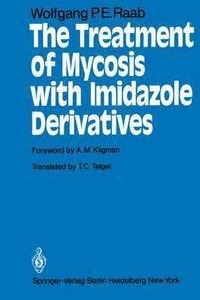
Liknande böcker
The Treatment of Mycosis with Imidazole Derivatives
Bok av W. Raab
This is an "old-fashioned" book in the best sense of the term: It is written by one man, and it is scholarly, complete, thorough, and thoughtful. It is, in fact, a magnum opus wherein every aspect is not only touched, but handled to perfec- tion. This is a treatise that deserves careful reading by that increasing cadre of medical specialists who understand the many ways in which mycoses threaten human health and happiness, viz, the veterinarian, pharmaceutical chemist, general practitioner, pharmacologist, and entire consortium of researchers who study the biology, epidemiology, pathogenesis, and treatment of fungus infec- tions. Mycoses encompass a vast spectrum of diseases from trivial superficial skin infections (tinea versicolor), troublesome ringworm infections (the tineas of skin, hair, and nails), yeast infections (candidosis), the systemic mycosis (cryptococcosis, histoplasmosis), and even the deep-seated infections due to molds and saprophytic fungi (aspergillosis). It is precisely because of the great variety of causative organisms that the imidazoles deserve a special treatise. They provide the first class of drugs with therapeutic activity against all the important fungi which infect humans and animals. Accordingly, their medical significance is great and the possibilities endless. Morever, the imidazoles are the first effective drugs whose antimicro- bial activities extend beyond the usual designation of "broad-spectrum. " Broad-spectrum antibiotics, for example, are either antifungal or antibacterial, not both as the imidazoles are. To be sure, there have been other chemothera- peutic compounds which inhibit bacteria and fungi.







